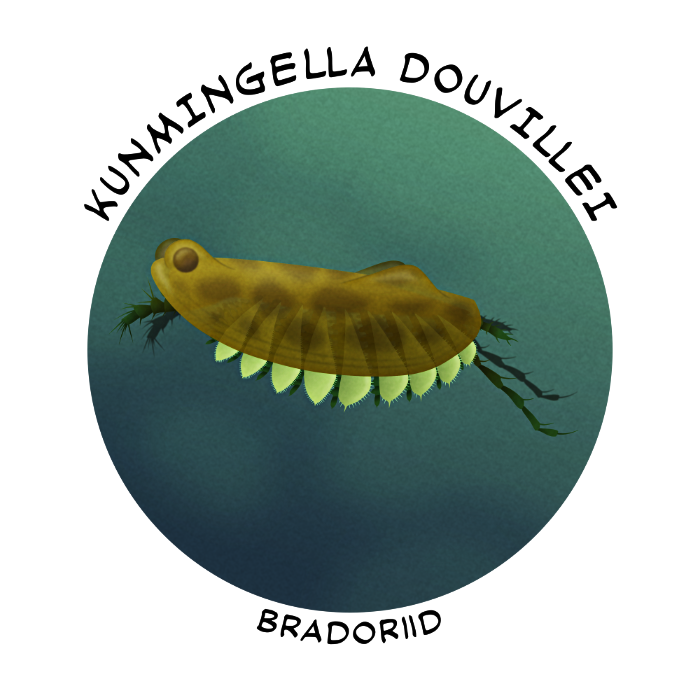The tiny bradoriids first turn up in the fossil record just before the earliest known trilobites, about 521 million years ago, and very quickly became some of the most abundant euarthropods in the mid-Cambrian. Found all around the world, they were clearly important components of many Cambrian food webs and probably had varying lifestyles from species to species, ranging from living on the seafloor to actively swimming around in the water column.
Less than 2cm long (0.8″), they’re mostly known just from fossils of their bivalved carapaces, but some specimens preserve evidence of a pair of antenna and varying arrangements of biramous and uniramous limbs.
They were traditionally thought to be crustaceans closely related to ostracods, but some studies have instead shifted them towards being considered stem-crustaceans or stem-mandibulates instead. And more recently rare high-detail preservation of the soft anatomy of a few species have suggested they actually belong even further down the arthropod evolutionary tree, as “higher stem” euarthropods positioned between the megacheirans and the earliest actual euarthropods.

Kunmingella douvillei is one of the best-known bradoriids, with its fossils being incredibly abundant in the the Chinese Chengjiang fossil deposits (~518 million years ago). About 5mm long (0.2″), it had two different types of biramous limbs and a couple of pairs of uniramous limbs at the back.
Some female specimens have been found preserved with eggs, carrying up to 80 on their rear biramous limbs, representing some of the oldest evidence of brood care in the fossil record.
After their initial success the bradoriids gradually declined through the late Cambrian, but a few species persisted into the Ordovician and they finally went extinct sometime around the middle of that period – which was also around the time that the ostracod crustaceans began to appear and diversify.
